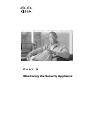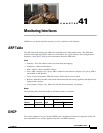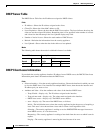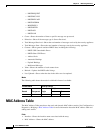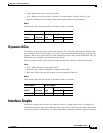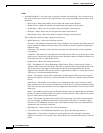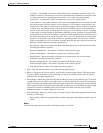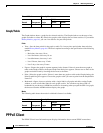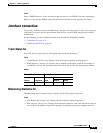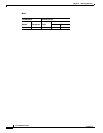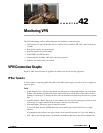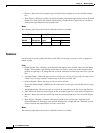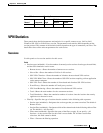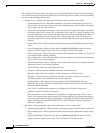
41-7
Cisco ASDM User Guide
OL-16647-01
Chapter 41 Monitoring Interfaces
Interface Graphs
Collisions—The number of messages retransmitted due to an Ethernet collision (single and
multiple collisions). This usually occurs on an overextended LAN (Ethernet or transceiver cable
too long, more than two repeaters between stations, or too many cascaded multiport
transceivers). A packet that collides is counted only once by the output packets.
Late Collisions—The number of frames that were not transmitted because a collision occurred
outside the normal collision window. A late collision is a collision that is detected late in the
transmission of the packet. Normally, these should never happen. When two Ethernet hosts try
to talk at once, they should collide early in the packet and both back off, or the second host
should see that the first one is talking and wait. If you get a late collision, a device is jumping
in and trying to send the packet on the Ethernet while the security appliance is partly finished
sending the packet. The security appliance does not resend the packet, because it may have freed
the buffers that held the first part of the packet. This is not a real problem because networking
protocols are designed to cope with collisions by resending packets. However, late collisions
indicate a problem exists in your network. Common problems are large repeated networks and
Ethernet networks running beyond the specification.
–
Input Queue—Shows the number of packets in the input queue, the current and the maximum,
including the following statistics:
Hardware Input Queue—The number of packets in the hardware queue.
Software Input Queue—The number of packets in the software queue.
–
Output Queue—Shows the number of packets in the output queue, the current and the
maximum, including the following statistics:
Hardware Output Queue—The number of packets in the hardware queue.
Software Output Queue—The number of packets in the software queue.
–
Drop Packet Queue—Shows the number of packets dropped.
• Add—Adds the selected statistic type to the selected graph window.
• Remove—Removes the selected statistic type from the selected graph window. This button name
changes to Delete if the item you are removing was added from another panel, and is not being
returned to the Available Graphs pane.
• Show Graphs—Shows the graph window name to which you want to add a statistic type. If you have
a graph window already open, a new graph window is listed by default. If you want to add a statistic
type to an already open graph, choose the open graph window name. The statistics already included
on the graph are shown in the Selected Graphs pane, to which you can add additional types. Graph
windows are named for ASDM followed by the interface IP address and the name “Graph”.
Subsequent graphs are named “Graph (2)” and so on.
• Selected Graphs—Shows the statistic types you want to show in the selected graph window. You an
include up to four types.
–
Show Graphs—Shows the graph window or updates the graph with additional statistic types if
added.
Modes
The following table shows the modes in which this feature is available:



